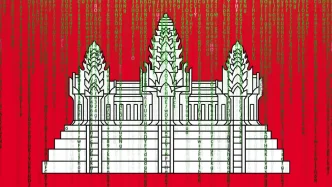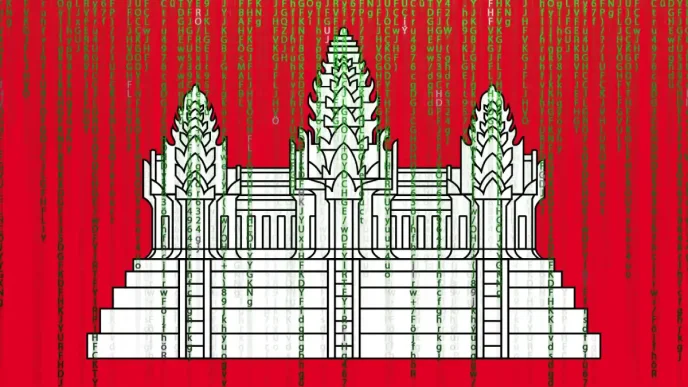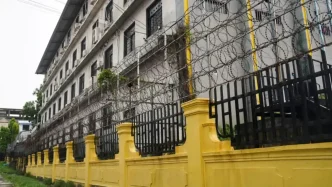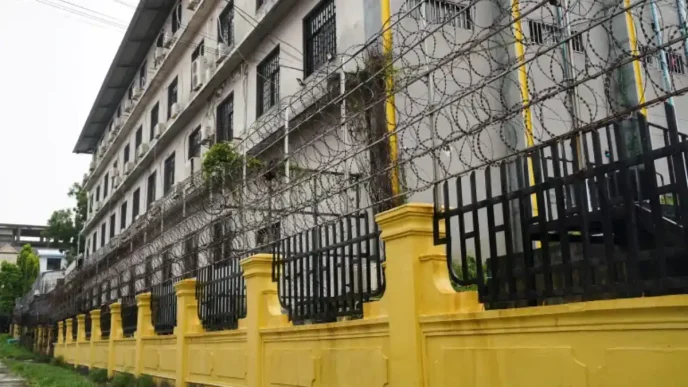A recent incident at Prasat Ta Muen Thom, an ancient Khmer temple located in Thailand’s Surin province near the Cambodian border, has sparked concern among Thai officials and reignited discussions over long-standing territorial ambiguities. On 13 February, Cambodian troops reportedly crossed into the area, sang their national anthem, and challenged Thai forces to open fire, prompting a formal complaint from Thailand’s military to their Cambodian counterparts. While both nations have so far avoided escalation, the event underscores the fragility of border relations in a region marked by historical and cultural sensitivities.
Thai Defence Minister Phumtham Wechayachai expressed unease over the incident, describing it as “provocative” and emphasising Thailand’s stance that the temple lies within its territory, despite unresolved border demarcation issues. “We do not want this to develop into a conflict,” Phumtham stated on Monday, highlighting efforts to maintain calm while addressing the symbolic act of Cambodian troops singing their anthem at the site.
A Contested Heritage Site
Prasat Ta Muen Thom, perched in the Phanom Dong Rak district of Surin province, is a relic of the ancient Khmer Empire, dating back centuries. Such temples are scattered across the Thai-Cambodian border, often serving as flashpoints due to their cultural significance to both nations. While Thailand asserts sovereignty over the site, Cambodia has historically laid claim to areas around similar structures, citing their Khmer origins. The border in this region remains undemarcated in parts, a lingering issue that has fuelled periodic tensions.
The temple’s location has made it a focal point for both worship and geopolitics. Thai authorities currently permit Cambodian visitors to access the site for religious purposes, a gesture Phumtham noted as a sign of goodwill. However, the recent actions by Cambodian troops have raised questions about the limits of such accommodations. “We have concern over the singing of their national anthem in a show of symbolism,” Phumtham remarked, indicating that while access is granted, Thailand remains firm on its territorial claims.
Military Response and Diplomatic Channels
In response to the incident, Thai military officials lodged a formal protest with the Cambodian Army, seeking to address the perceived provocation without resorting to hostility. Phumtham confirmed that discussions are underway with Foreign Minister Maris Sangiampongsa to coordinate a diplomatic approach. “Thailand and Cambodia do not have any conflict,” he reiterated, underscoring that the protest was intended to clarify Thailand’s position rather than inflame tensions.
The incident is not the first of its kind. The Thai-Cambodian border has witnessed sporadic clashes over the years, most notably around the Preah Vihear temple, another Khmer site, where military confrontations in 2008 and 2011 resulted in casualties on both sides. While the current situation at Prasat Ta Muen Thom has not escalated to violence, it serves as a reminder of the potential for misunderstandings to spiral into broader conflict if not handled with care.
Balancing Local Sentiment and Regional Stability
One of Phumtham’s key concerns is the impact of such incidents on local communities and cross-border relations. The border areas of Surin and neighbouring Cambodian provinces are home to mixed populations with deep cultural ties, often sharing Khmer heritage. Many locals on both sides rely on cross-border movement for trade, family connections, and religious practices. Thai authorities have prioritised the “feelings of local people and tourists from over the border” in their response, aiming to prevent the incident from disrupting these ties.
Yet, the symbolic nature of the Cambodian troops’ actions complicates this balance. Singing a national anthem on disputed ground can be interpreted as a assertion of sovereignty, a gesture likely to resonate with nationalist sentiments in Cambodia. If unaddressed, such acts could embolden further provocations or harden public opinion in Thailand, where the government faces domestic pressure to defend national territory. Analysts suggest that while neither side appears eager for conflict, the potential for miscalculation remains high in the absence of a finalised border agreement.
Historical Context of Border Disputes
The Thai-Cambodian border dispute traces its roots to the colonial era, when French Indochina—encompassing modern-day Cambodia, Laos, and Vietnam—shared a frontier with the Kingdom of Siam, now Thailand. The 1907 Franco-Siamese Treaty attempted to delineate the border, but ambiguities persisted, particularly around areas with cultural landmarks like Khmer temples. Post-independence, both Thailand and Cambodia have sought to assert control over these sites, viewing them as integral to their national identity.
The International Court of Justice (ICJ) ruled in 1962 that Preah Vihear temple belonged to Cambodia, a decision that remains a sore point for some in Thailand. However, surrounding areas and other temples like Prasat Ta Muen Thom have not been subject to similar binding rulings, leaving room for competing claims. Joint efforts to survey and demarcate the border have been ongoing for decades, with periodic agreements to resolve disputes peacefully. Yet, progress has been slow, hampered by domestic politics and mutual mistrust.
If the current incident at Prasat Ta Muen Thom is to be resolved without escalation, experts argue that both nations must prioritise dialogue over posturing. Confidence-building measures, such as joint cultural preservation initiatives or temporary demilitarisation of contested sites, could help reduce tensions. However, such steps require political will on both sides, a factor that may be constrained by domestic audiences eager for displays of national strength.
Regional Implications and ASEAN’s Role
The incident also carries implications for the broader Southeast Asian region, where border disputes are not uncommon. The Association of Southeast Asian Nations (ASEAN), of which both Thailand and Cambodia are members, has long advocated for peaceful resolution of conflicts through dialogue and adherence to international law. ASEAN’s principle of non-interference limits its ability to mediate directly, but it provides a platform for bilateral discussions, as seen in past Thai-Cambodian talks facilitated by the organisation.
Should tensions at Prasat Ta Muen Thom persist, they could test ASEAN’s cohesion at a time when the bloc faces other challenges, including maritime disputes in the South China Sea and political instability in Myanmar. A flare-up between Thailand and Cambodia risks diverting regional attention from these issues, while also highlighting the difficulty of resolving historical grievances in a region with diverse cultural and political landscapes.
Moreover, the incident occurs against the backdrop of shifting regional dynamics. Thailand and Cambodia have both sought closer ties with major powers like China, which has invested heavily in infrastructure across Southeast Asia. While there is no direct evidence linking external actors to the current border issue, the influence of foreign investment and geopolitical interests could complicate bilateral relations if either side perceives the other as leveraging external support.
Looking Ahead: A Path to De-escalation?
For now, Thai and Cambodian officials appear committed to containing the fallout from the Prasat Ta Muen Thom incident. Phumtham’s measured tone and emphasis on diplomacy suggest a preference for dialogue over confrontation. However, the unresolved nature of the border demarcation means that similar incidents could recur, each carrying the risk of escalation if not addressed promptly.
One potential avenue for resolution lies in accelerating joint border surveys and negotiations, a process that has languished for years. Both nations could also consider interim agreements to manage access to contested sites, ensuring that cultural and religious significance is respected without prejudice to territorial claims. Such steps, while incremental, could build trust and reduce the likelihood of future provocations.
Public sentiment will also play a role in shaping the response. In Thailand, the government must balance the need to assert sovereignty with the risk of alienating Cambodian neighbours, whose goodwill is essential for border stability. In Cambodia, leaders face similar pressures to uphold national pride without derailing relations with a key regional partner. Social media platforms, often a barometer of public opinion in both countries, have already seen heated discussions about the incident, underscoring the emotional weight of the issue.
As discussions between Thai and Cambodian officials continue, the incident at Prasat Ta Muen Thom serves as a stark reminder of the challenges inherent in managing shared heritage and unresolved borders. While the immediate risk of conflict appears low, the event highlights the need for sustained diplomatic engagement to prevent history from repeating itself in this volatile region. For local communities, tourists, and policymakers alike, the hope is that dialogue will prevail, preserving both peace and the cultural legacy of sites like Prasat Ta Muen Thom for future generations.














